Making Eco Prints On a Summer Day
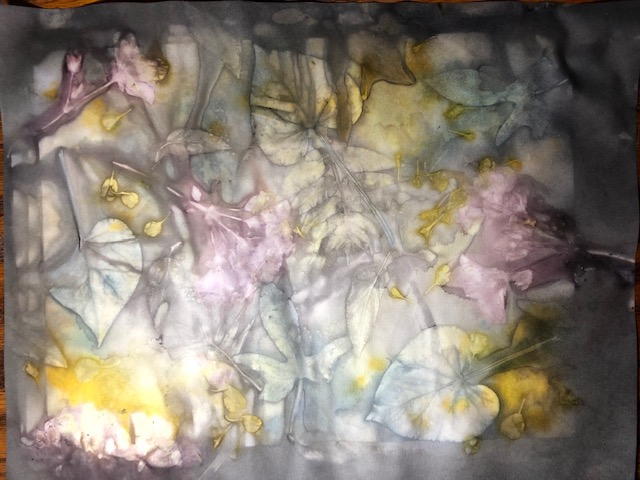
I remember my Uncle Clarence and his lovely botanical watercolors. He documented flowers, using his paintbrush and watercolor pigments, like so many botanists before him. I wonder what he would think of these botanical prints, where the color and shape of the leaves and flowers imprint onto paper or fabric as a natural dye. I think he would love them.
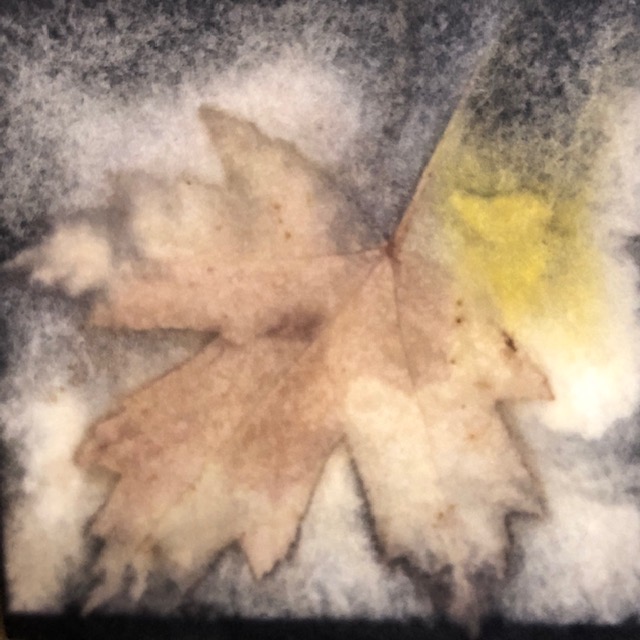
Eco printing brings back my childhood hobby of pressing autumn leaves flat and dry between the pages of a book.
When I press a leaf between pages for eco printing, I don’t keep the leaf, but I keep the pages, imprinted with nature’s own shapes and colors.
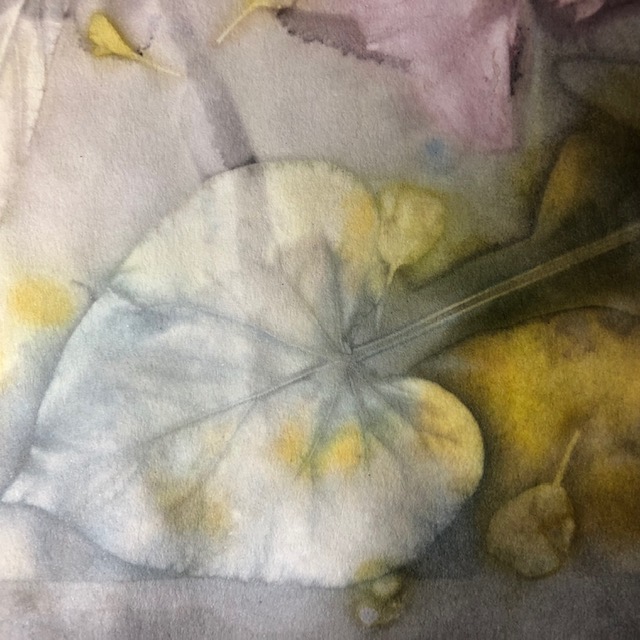

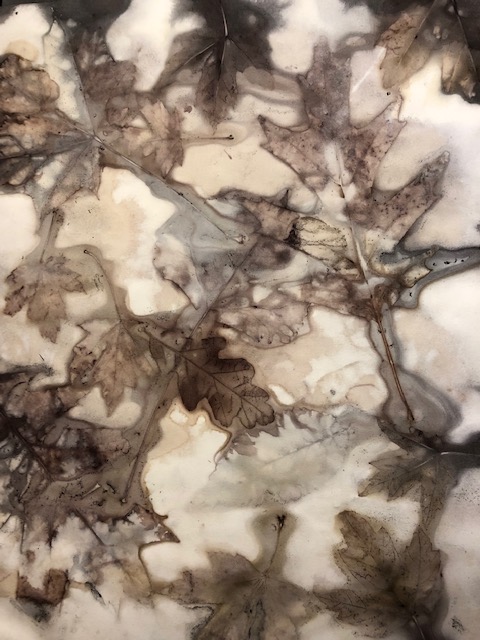
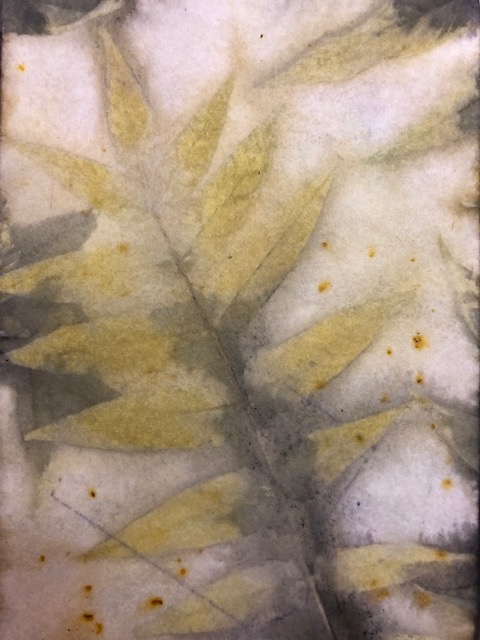
The process of eco printing is very much like pressing leaves, but we cook the “book” the leaves are pressed in! Heat, pressure, and water all combined will pull the natural dyes from the leaves and transfer them onto the paper. The process is similar for fabric, but the cloth is rolled and bound to put pressure on the leaves between the layers.
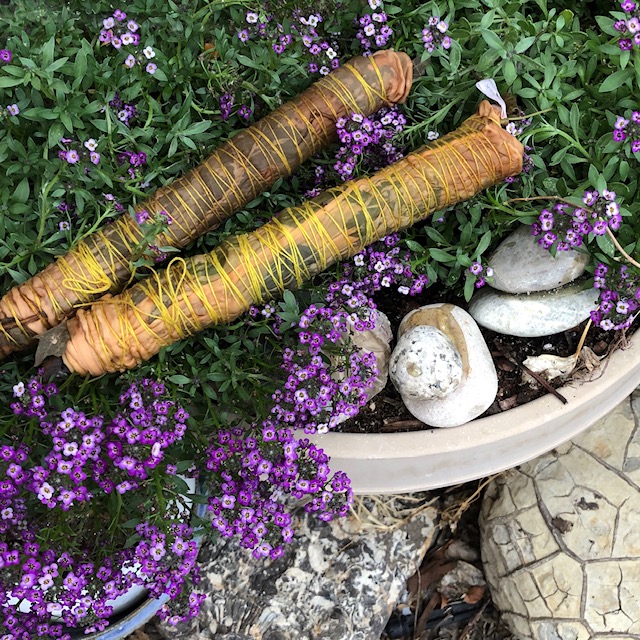
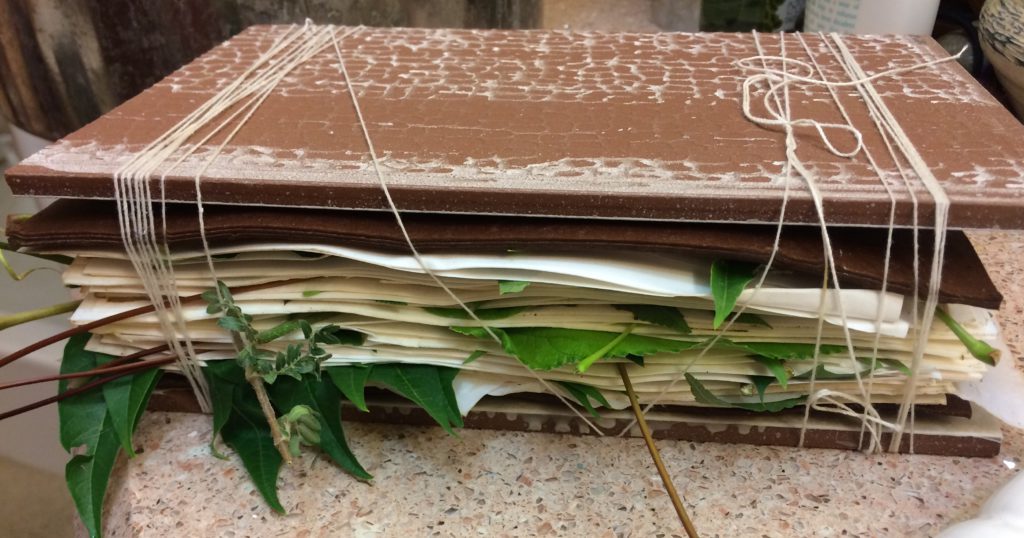
Unlike other printmaking techniques, the results of eco printing are difficult to reproduce or predict. The minerals in the soil where the plant grows can change the color of its prints. The amount of sunshine the plant has received, or the amount of water can change your results. Were the leaves new spring leaves, or late summer leaves? Were they fallen and dried before printing? Frozen? Nature makes her voice heard with this technique, making eco printing a kind of spiritual process for many of us who do this.
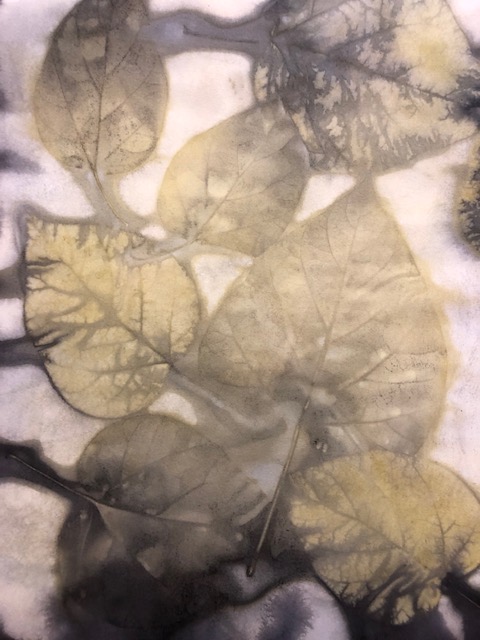
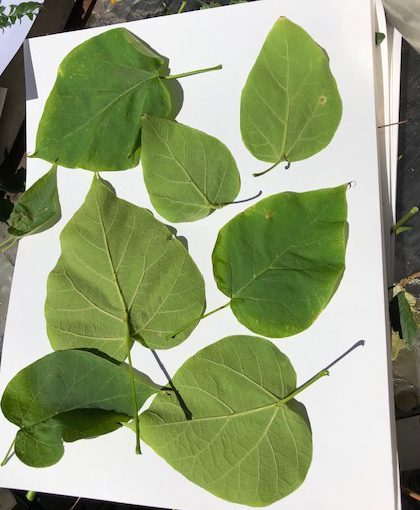

Small things can change the print drastically. Look at these catalpa leaves laid out onto the paper. The top side of catalpa leaves is a darker green, and smoother. Some of these are laid out so that the top side is up, and some have the underneath side up. See how different the prints are? The top side prints more yellow, and the underside prints darker.
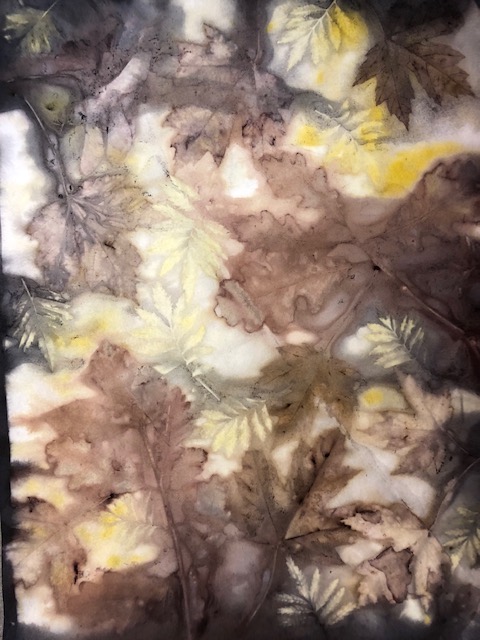

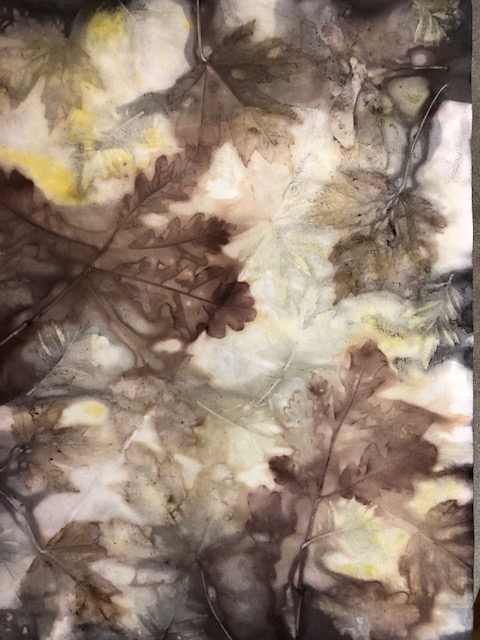
This print has maple leaves, oak leaves, and marigold leaves. The topside of both maple and oak leaves prints darker than their undersides. Marigold leaves are much yellower on the top. (The bright yellow is marigold petals on the other side of the paper. Sometimes strong color bleeds right through the page, which also influences the color of a print.)
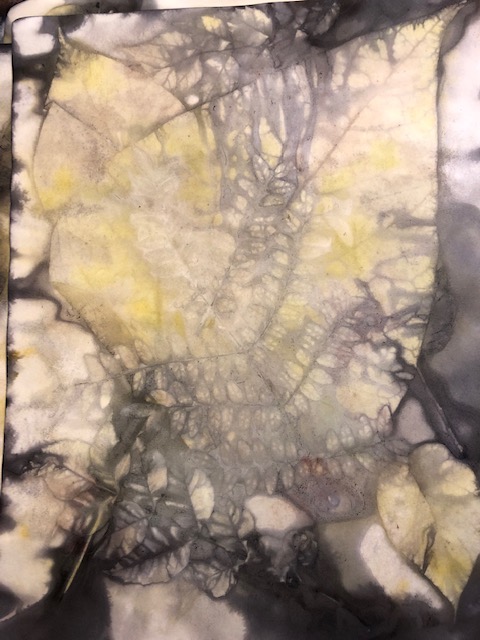
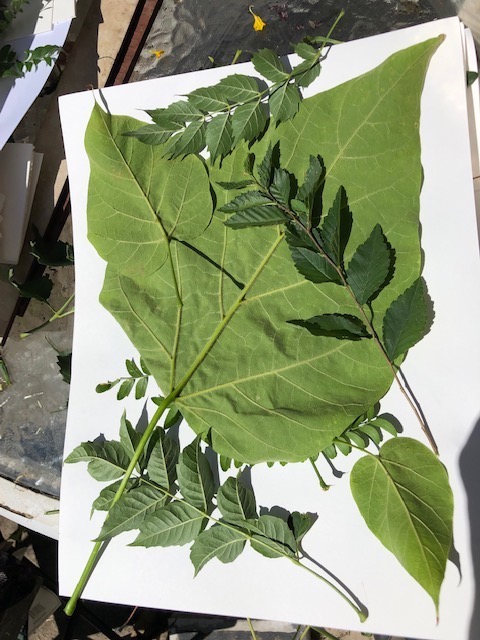
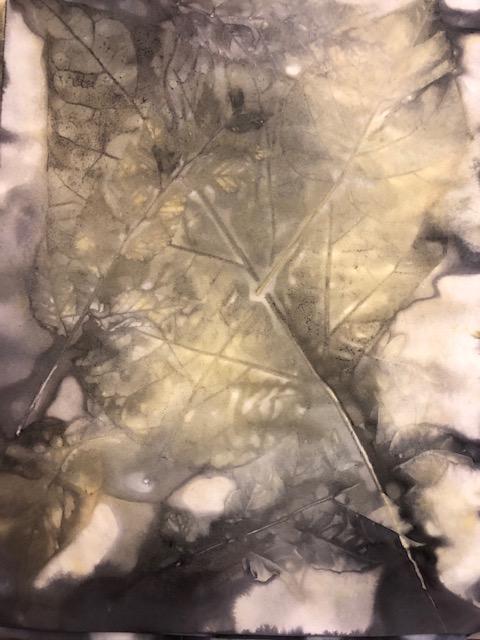
Catalpa leaves are reliable printers, on paper or on fabric. The littlest ones print just as well as the gigantic elephant ear leaves. As beautiful as they are, though, one giant leaf on a page is hard to fit into an interesting composition. One of my favorite eco printing tricks is to layer the huge leaves with smaller, more delicate ones, so the little leaves act as a stencil. Here, I layered catalpa leaves with elm and honey locust.

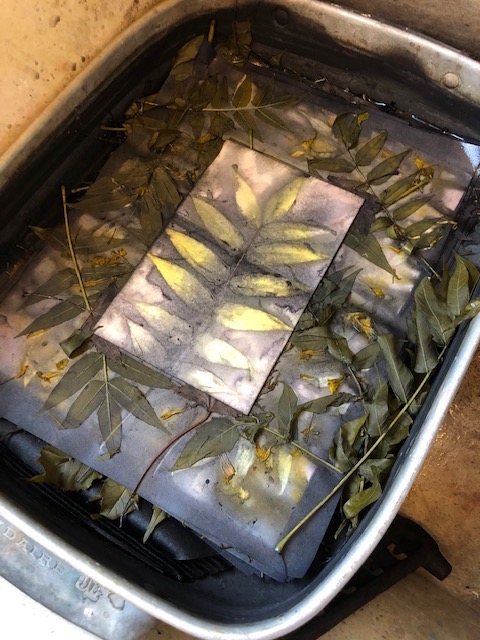
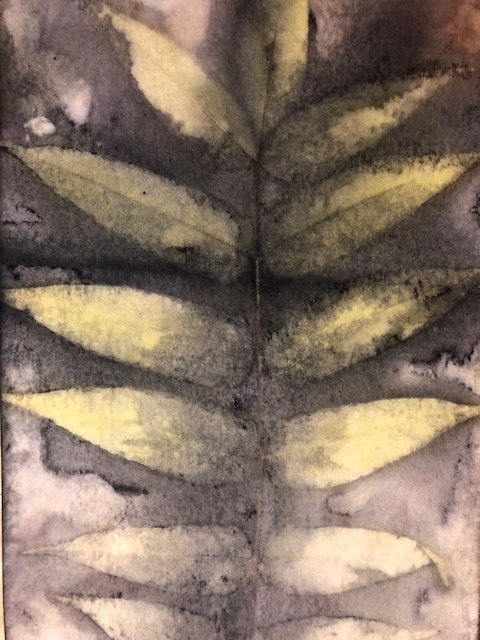

I also layer smaller pieces of paper with larger ones, creating this frame effect. With the same leaves, I get several layers of interesting paper prints, like I did with these Tree of Heaven leaves and some sprinkled marigold petals.
This batch of prints was simmered for about 6 hours, submerged in water. It had logwood dye added and had a bit of rusty iron in the dyebath, which turns logwood gray instead of purple. (This was probably the dye used for Confederate uniforms in the American Civil War.) Having the natural dye in the water adds dramatic results, as it seeps in between the sheets of paper and outlines the leaves.
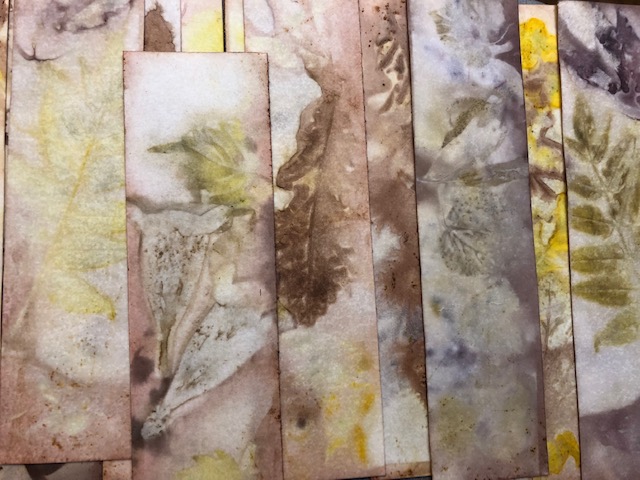
An old-fashioned sepia toned brown can be achieved in the same way, but with madder and iron in the dyebath, rather than logwood.
With the natural dye in the dyebath, even prints that didn’t come out clearly are interesting to look at, and can be used in the same ways as any decorative paper.

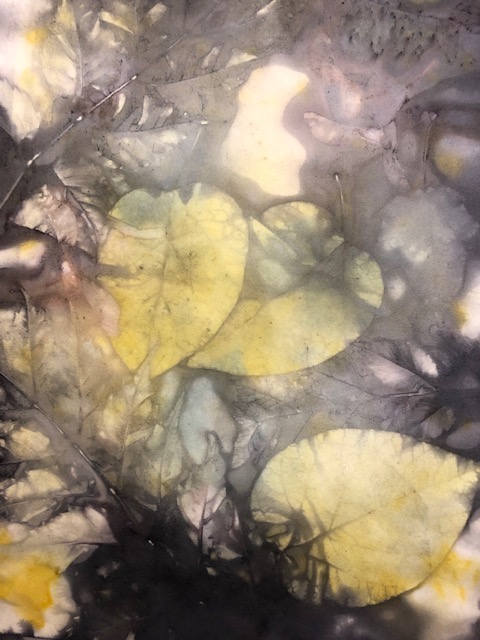
Using many types of leaves, petals, grasses, or seeds in one print can result in a colorful print, as the colors bleed together and influence each other.
Or a single type of leaf on a print can result in simple, crisp outlines.
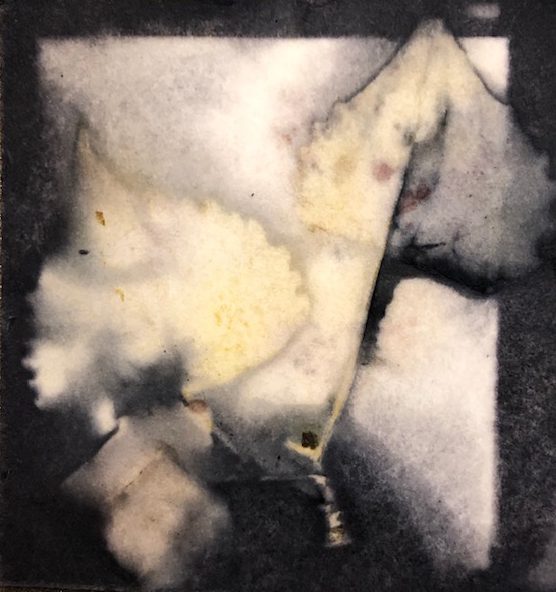

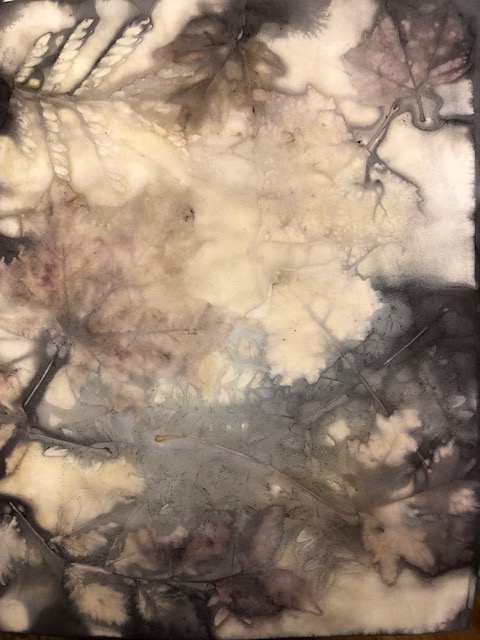
I print mostly with fresh leaves when they are available. You can see in this photo that I also use old dried leaves. A soak in water softens them up and they print as well as fresh ones. Sometimes they print better, since I wouldn’t have bothered to save them if I didn’t know they were good printers. I have a maple tree at my house, but it doesn’t print especially well. The tree in front of my daughter’s house, though, prints beautifully, and I have a bag of those leaves saved from last fall.
Every time I open a bundle I find delightful surprises inside. I wish my Uncle Clarence could see them, too!
Copyright © 2019-2024 Kelley Adams. All rights reserved.
All text, photos, and graphics are the property of Kelley Adams.
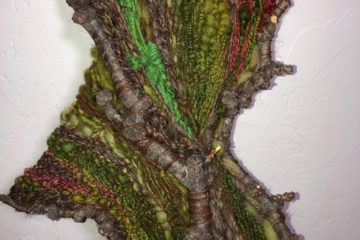

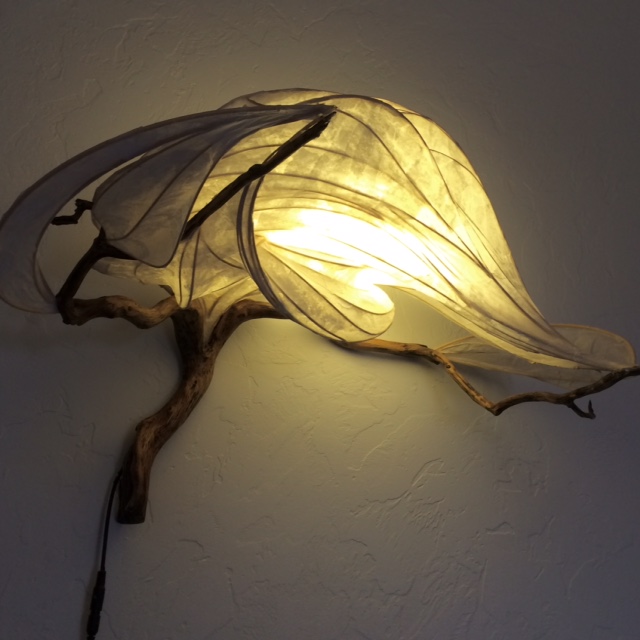
0 Comments